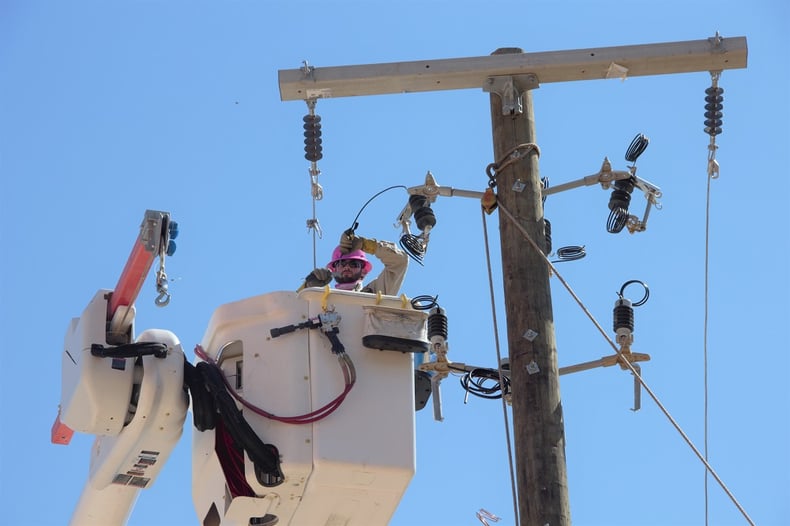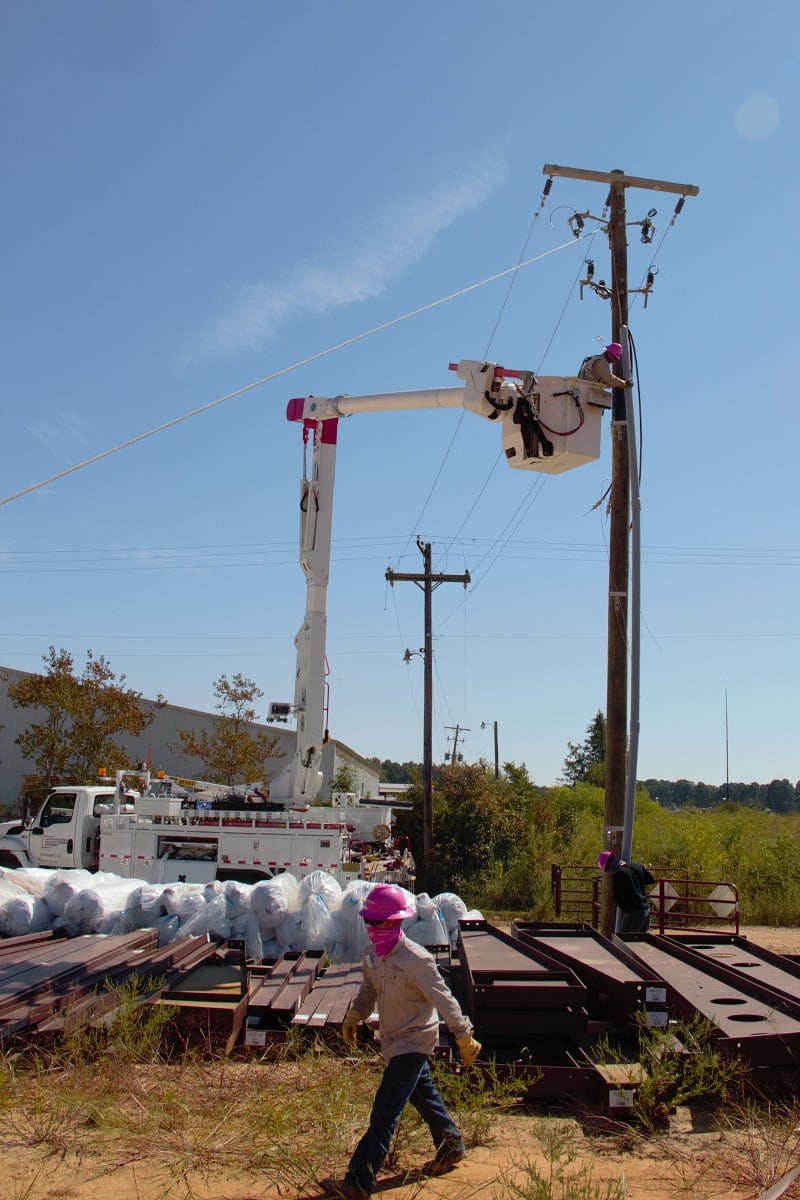Originally published in AEPNow on Monday, January 4, 2021

Shreveport construction crews are completing capital projects at a faster pace than ever before thanks to a strategy that helps them understand the financial impact of their work. This year, the Shreveport District initiated a weekly schedule of pole replacements and other projects to build long-term assets.
Capital projects such as these strengthen the power grid and make it safer for employees and customers. In addition, as investments, these projects have a financial benefit. “A big part of what’s driving up our capital is getting everyone on the same page and really being deliberate in the work,” said Shreveport MDS Mike Mathews. Each week, supervisors, engineers and others involved in projects meet to discuss capital work for the week, as well as review the previous week’s work and planned projects for the next one. That communication has helped the district to stay on track as emergent work – unexpected jobs such as trouble calls or sponsored work – comes up, Mathews said.

A New Mindset
Shreveport’s coordination is a prime example of how The Great Game of Business® and its principle of Open-Book Management are changing the way SWEPCO Distribution employees think about their work.
Setting a goal
construction crews to spend 70% of their time on capital projects and service personnel to work on them 25% of the time. Achieving this target would reduce the time spent on operations and maintenance (O&M), which is work that has no earnings potential.
Tracking success
Kidwell and a 12-member design team worked with Great Game™ Certified Coach, Ann Casstevens, to determine the Critical Number and pinpoint additional measurements that would be the main drivers to success.
For Distribution, those included tracking good catches and post-job reviews, which could initiate discussions to improve efficiencies and reveal new ideas. They also, among other things, began to monitor commissioned devices and the number of miles Forestry trimmed vegetation along circuits.
In Great Game terms, this process creates the line of sight from the Critical Number to the front-line of the organization, Casstevens said.
“It starts with a scorecard with the Distribution leadership team and continues with building scoreboards for as many workgroup teams as needed to create clarity and focus around what defines winning for SWEPCO Distribution,” she said. “In addition, it focuses on what choices do we need to make every day that will ensure we will be
successful for ourselves and for the company.”
Each week, Distribution leadership tracks these and other key metrics during a virtual Huddle that brings together each district’s MDS and representatives of other departments. The group uses a digital scorecard to review the measurements on a weekly and monthly basis, as well as forecast them for the future.
“The Distribution scorecard contains metrics that were selected because they have a direct line of sight relationship to the Critical Number,” Casstevens said. “Line of sight is about employees making choices through their daily operations that will drive customer value, and therefore, drive financial value to the company.”
While changes at each district have allowed each to tackle more capital projects, Shreveport has experienced the most growth.
Kidwell said when districts started tracking the amount of capital work they accomplished, Shreveport construction crews were spending around 30% of their time on capital projects.
Fast forward several months, that amount now fluctuates between 50% and 60%.
“Our success has been gradual, but as the weeks go by, we’ve recognized adjustments that can help us improve, and we’ve made those,” Mathews said.
He said seeing that progress has been one of the biggest benefits of participating in open-book management.
“Day-to-day, we are keeping score, and so we know if we’re being successful or not,” he said.
The scorecard and weekly huddle are revealing success for other departments as well.
In July, Forestry began to track the miles of vegetation trimmed along circuits and reporting that figure during the weekly huddle. That effort revealed crews covered more miles than expected along rural circuits where Jarraff Industries machines are used.
The manufacturer makes both wheeled and track machines SWEPCO has used for years. This year, Forestry added a quad-track machine, which features a flexible saw arm and can maneuver across difficult terrain.
Region Forestry Supervisor Beth Corbin, said prior to using the Jarraff machines, her department averaged trimming about 300 miles of vegetation system-wide in a year. In 2020, Corbin expects that figure to double.
“Using these Jarraff machines and changing the way we work going from bid to time-and-material and time-and-equipment work has been a benefit for us,” Corbin said. “It’s allowed us to stretch our dollar a little bit more and accomplish significantly more miles.”
Gary Guin, director of Risk & Project Management, said identifying that success is a prime example of how the Great Game of Business is benefitting Distribution.
“What we are seeing is more value out of the dollar because we are looking at it on a routine basis,” he said.
Kidwell said as 2020 draws to a close Distribution will review its three-to-five year plan to learn and improve for 2021.
“SWEPCO Distribution is comprised of an amazing group of people who work hard to make us better today than we were yesterday and better tomorrow than we were today,” he said. “I am excited to see what we’ll accomplish in the future.”
.png)







.png)




-5.png)

